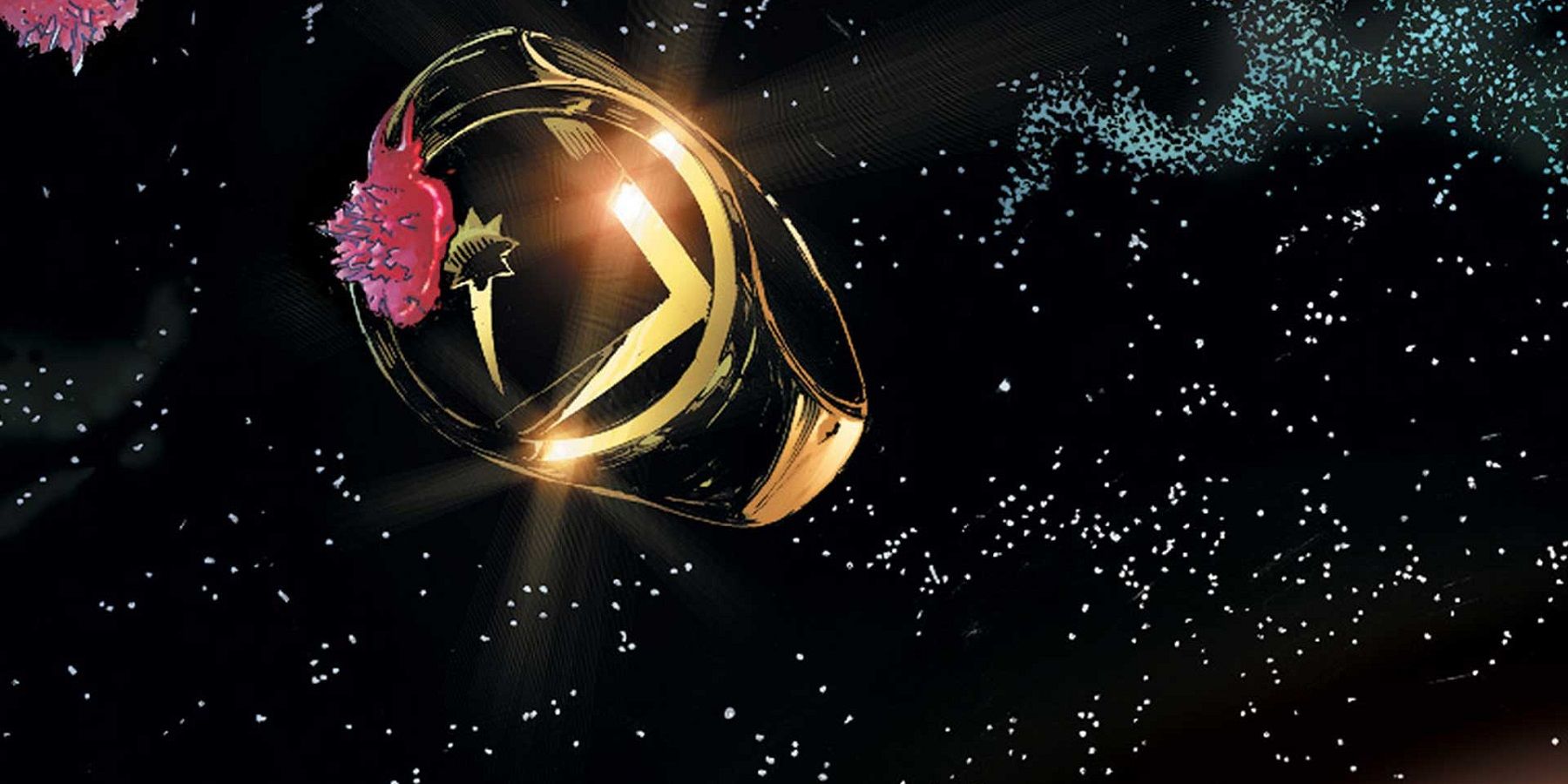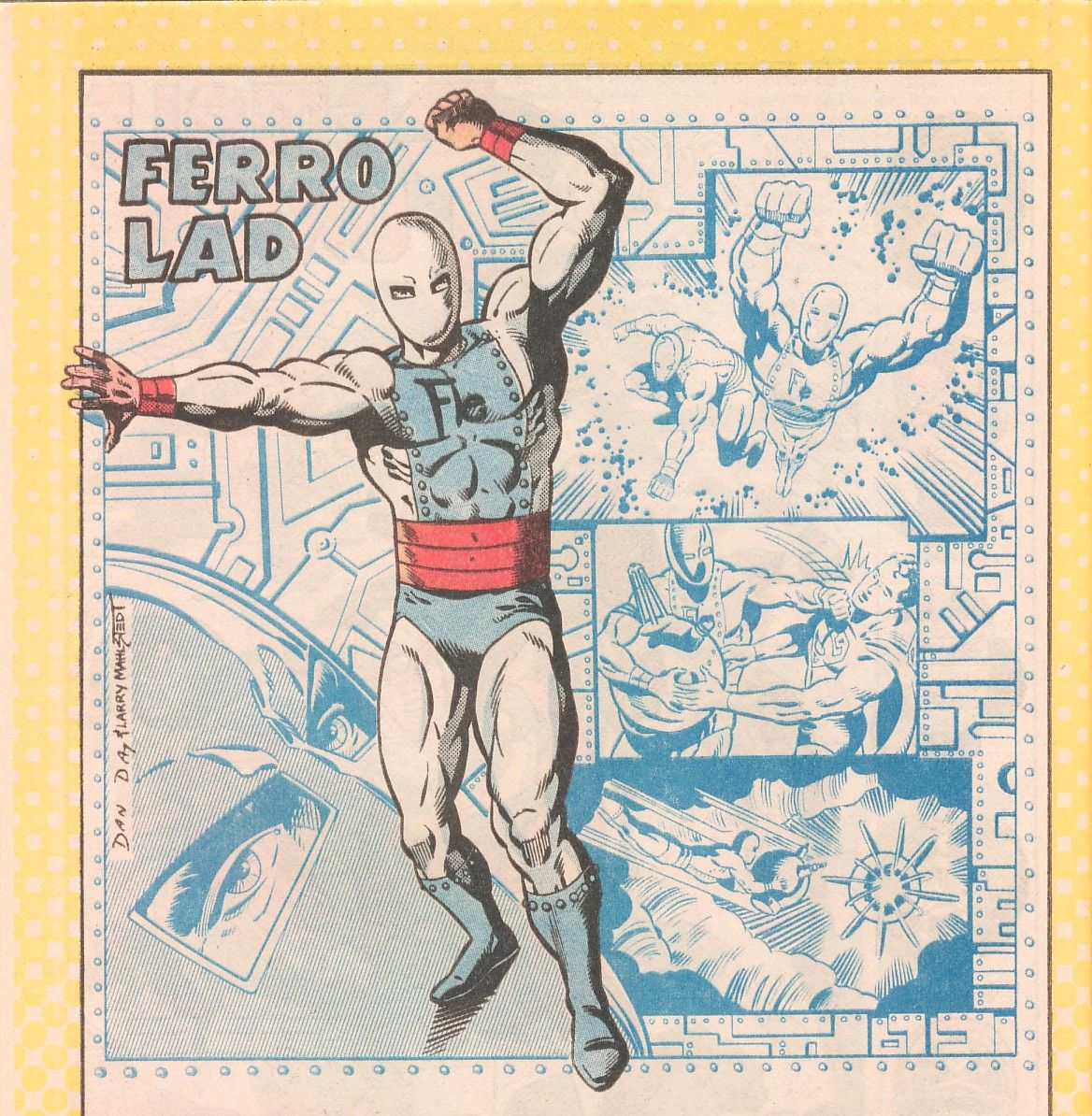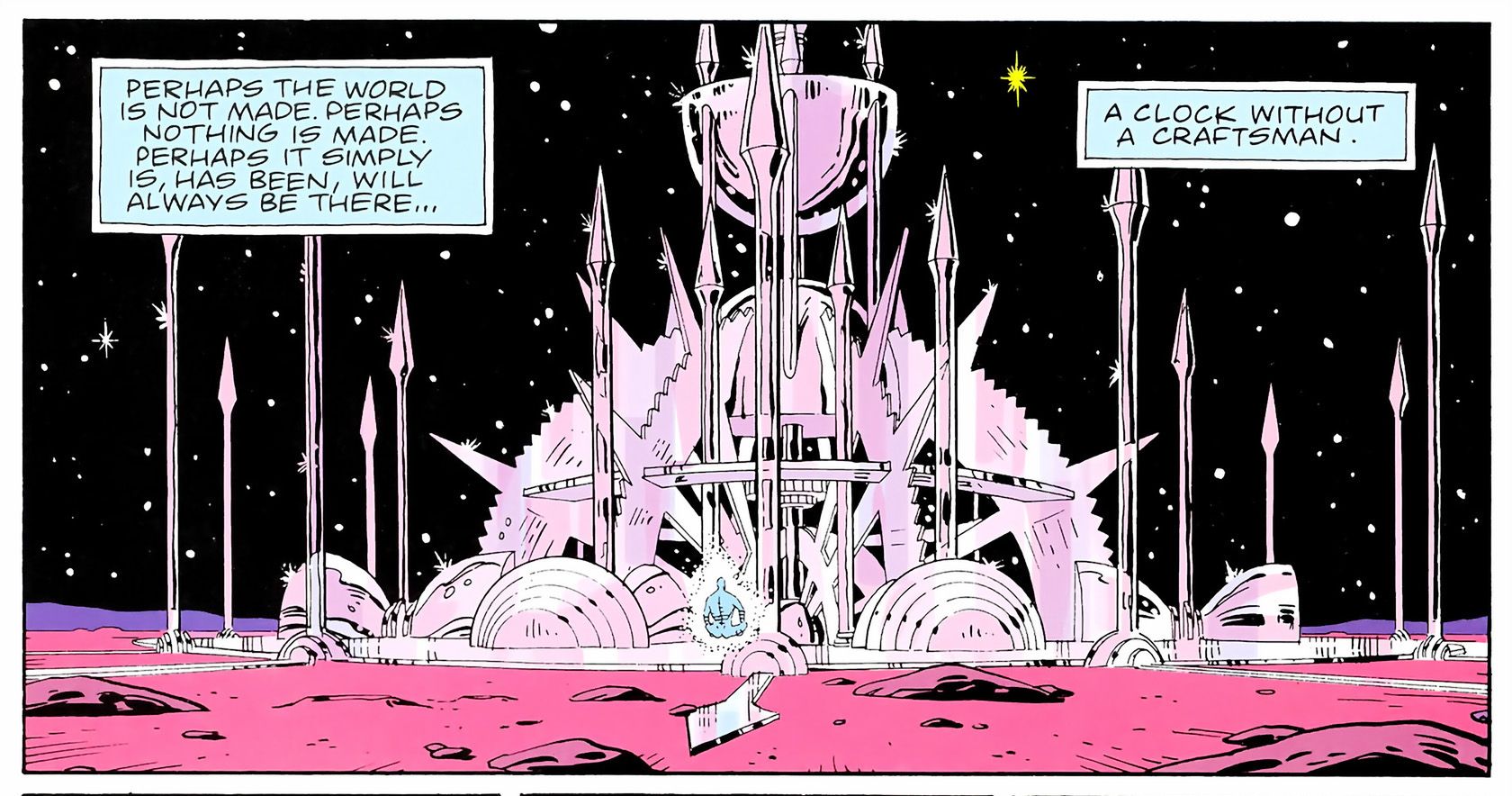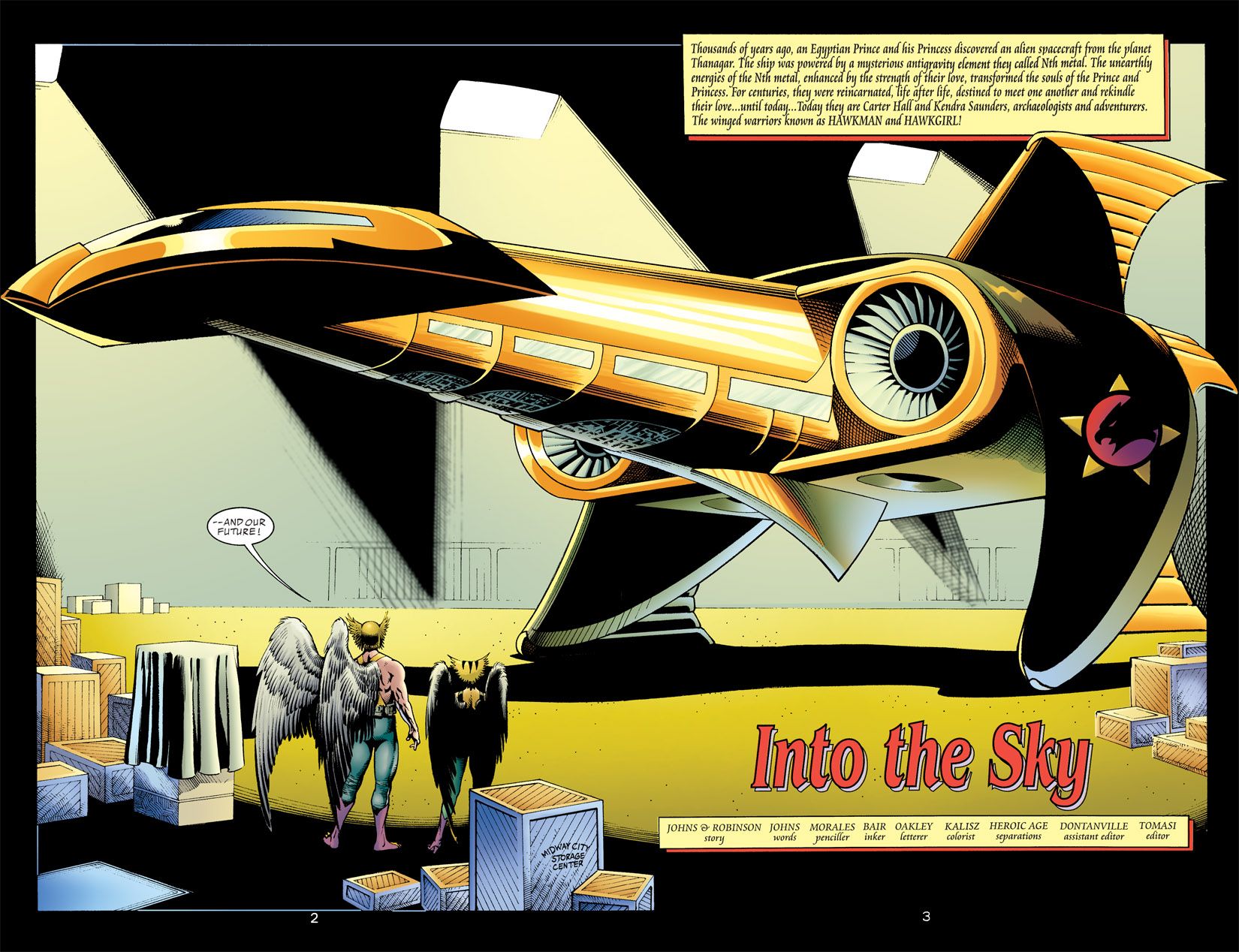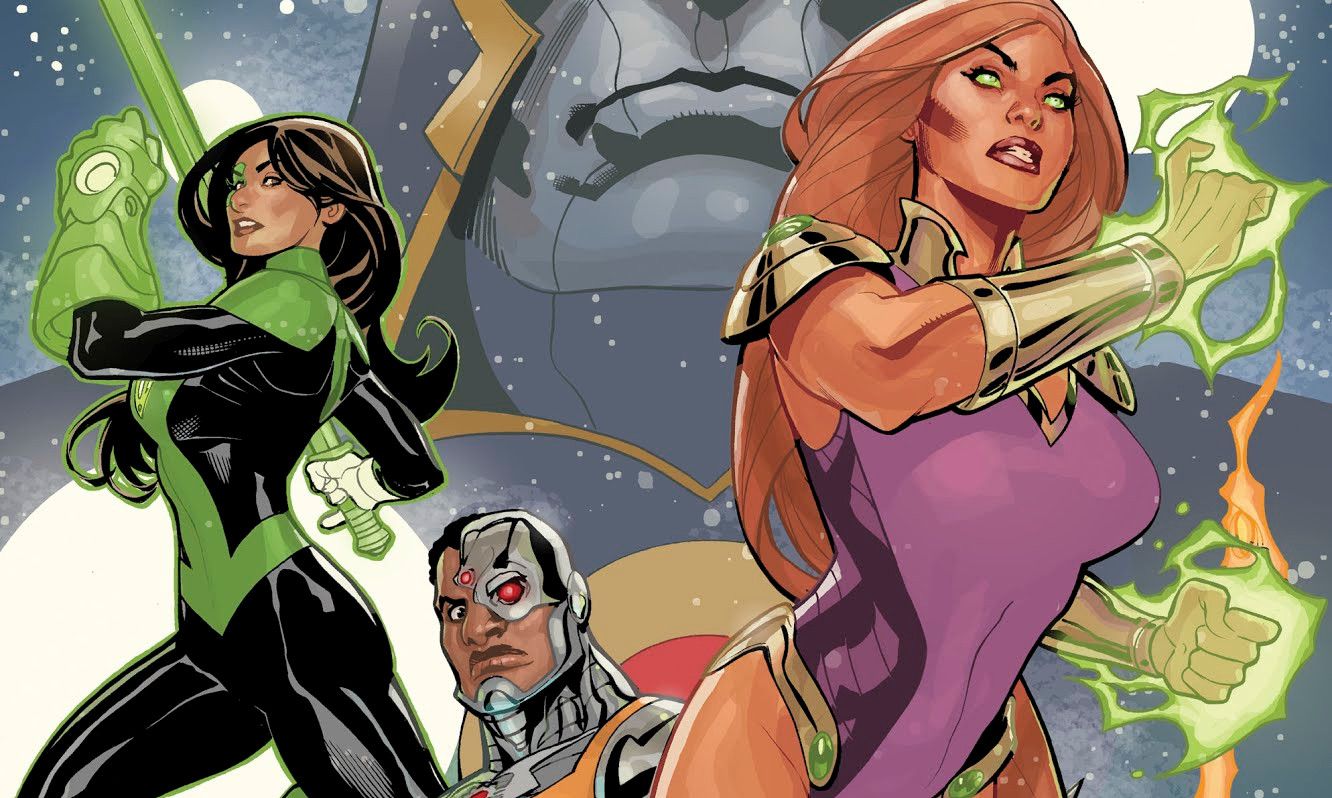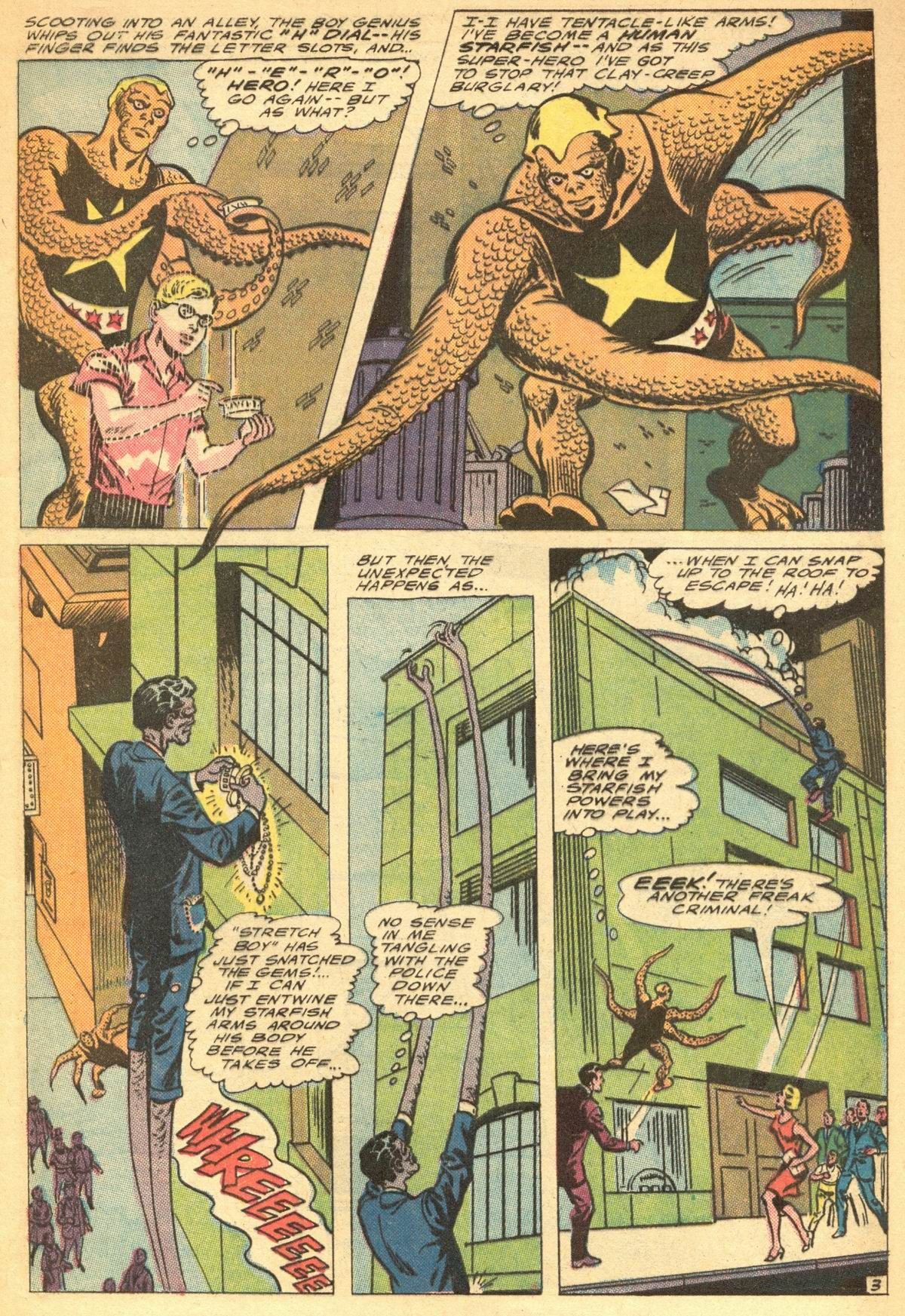WARNING: The following post contains MAJOR SPOILERS for Doomsday Clock #9, on sale now.
Like its predecessor, Doomsday Clock has for the most part been telling a fairly dense story. Since it's not just a sequel to Alan Moore and Dave Gibbons' Watchmen, but a bona fide Big Event which reshapes DC Comics' shared superhero universe, it's got some lofty goals. Accordingly, these annotations have tried to see what D-Clock is trying to do via its parade of Easter eggs, minutiae, and assorted narrative devices.
Still, not every issue can hold hidden treasures; and this one is probably the series' least complicated installment. Although we're not yet into spoiler territory, for now we'll say that the issue spends most of its page count calling back to Geoff Johns' previous DC events (and one in particular). The issue ends on a significant revelation about the history of the DC Universe, and it does advance the overall plot in a meaningful way; but it's pretty straightforward about everything.
Therefore, grab your copy of Issue #9 and get ready to follow along, because we've still got a lot to get through!
RELATED: Shazam Family's Reaction to Meeting Naked Dr. Manhattan is Priceless
Doomsday Clock issue #9 was written by Geoff Johns, drawn by Gary Frank, colored by Brad Anderson and lettered by Rob Leigh. Amie Brockaway-Metcalf designed the text pages. Brian Cunningham was the Editor, with Amedeo Turturro as Associate Editor.
Legion Lost (Page 1)
Doctor Manhattan opens the issue talking about Andrew "Ferro Lad" Nolan, created by Jim Shooter -- who at age 14 (!) both wrote and pencilled Ferro's debut (!!) in July 1966's Adventure Comics issue #346. Ferro Lad's superpower was the ability to turn himself into iron (the metal, not the household appliance). In February 1967's Adventure issue #353, the Legion of Super-Heroes was running out of options against the Sun-Eater, a giant interstellar creature which, yes, threatened to devour our pal Sol. With the invulnerable Superboy incapacitated, this made Ferro the best option to deliver a creature-killing bomb; but as you might have guessed, Ferro didn't make it. The specific date comes from the issue's on-sale date of December 27, 1966.
As it happens, Ferro Lad was revived twice, first as a clone (December 1991's Legion of Super-Heroes issue #24); then as part of a subsequent Legion reboot (November 1996's Adventures of Superman issue #540). Indeed, the 1996 version of "Ferro" (no "Lad") first appeared during a new take on the Sun-Eater story. This time (spoilers!) Ferro survived.
We're pretty sure that the Legion flight ring seen here bears the current Legion logo, which we think dates back to October 1990's LSH issue #12 or thereabouts. Previously, the flight rings sported a more formal-looking "L" and lacked the falling-star element. Of course, since this is a Watchmen-adjacent story, there's a drop of blood on the ring as well. The flight rings first appeared in February 1965's Adventure issue #329, in a story written by Jerry Siegel and drawn by Jim Mooney. There they replaced the less-elegant flight belts, which the group had used since March 1963's Adventure issue #306. Made of Valorium, which is derived from the now-ubiquitous Nth Metal, flight rings also have various other functions including communications and distress calls.
RELATED: Doomsday Clock Reveals How Doctor Manhattan Rebooted the DC Universe
A couple of the future dates may match up to individual Legion issues, albeit a thousand years earlier. The issue cover-dated November 2007 was Supergirl and the Legion of Super-Heroes issue #34 (written by Tony Bedard and drawn by Dennis Calero, featuring "The Quest For Cosmic Boy" Part 1); while the issue on sale November 29, 2007 was S/LSH #36, the quest's "Epilogue" and the final issue before Jim Shooter returned as regular writer. Likewise, the issue cover-dated March 1984 was LSH issue #309, by Keith Giffen and Paul Levitz (with Paul Broderick pencilling a second story). The issue on sale March 6, 1984 was LSH #312, also by Giffen and Levitz. None of them sound especially memorable, at least not in the "Great Darkness Saga" sense.
As for the other dates, May 2030 probably refers to events chronicled in 1991's Armageddon 2001 event, whose first issue was cover-dated May 1991. For the uninitiated, the event concerned a fallen superhero who – thanks to some cataclysm in the year 2001 – had become a world-conquering dictator by the year 2030. The event is infamous for telegraphing its ending, which (anti-spoilers!) would have had Captain Atom revealed as the ultimate villain.
The year 2430 may refer to a few different things. The original Reverse-Flash (Eobard Thawne) and Michael "Booster Gold" Carter were each born in the 25th Century; and given that both were active in the 2460s, they could have been born around 2430. Speaking of Booster, 2430 could also be the year the Space Museum was founded. It was a fixture of the 25th Century by the time Booster stole all that gear in 2462.
Finally, we're not sure about August 2192, except to say that Space Ranger operated during the 22nd Century and it's 200 years (or so) after the apocalyptic events of D-Clock issue #1.
NEXT PAGE: Doomsday Clock Annotations: When in the DC Timeline is Doctor Manhattan?
Manhattan Martian Mystery (Page 1)
Alert readers may remember our discussions about Doctor Manhattan's relationship with time. All the talk of tachyons may be helpful, albeit indirectly. Going back to Watchmen, it appears that Doctor Manhattan is cognizant of his entire timeline, start to finish. For all intents and purposes, he's immortal and omnipotent. As a result, that doesn't mean he travels in time, at least as far as we are used to seeing time-travel portrayed. Instead, apparently he uses that perspective to affect events in the timestream, and thereby change history. This stands in contrast with the Watchmen "rules," where his statement about being a "puppet who can see the strings" suggests that he's unable to change history.
RELATED: The JSA Arrives in Doomsday Clock Preview
Nevertheless, he has now been present in two timelines – the Watchmen world's, where he was born in 1929 and disappeared in 1985; and the DC Universe (or "Universe Designate Zero"), which he may have entered in the 1930s and existed all the way into the 31st Century. Therefore, because he is able to perceive all of his personal timeline simultaneously, it looks like he is now able to affect those events. On Page 1, for example, he erases the Legion from the timeline by getting rid of the Golden Age Green Lantern.
Of course, the present-day sequences of Watchmen issue #9 also took place on Mars. Even though this is the DCU Mars, it still has an Elsa castle, as well as the photo of Jon and Janey from that long-ago and faraway boardwalk.
Speaking of far away, Batman's Page 12 query leads us to ask, just how far away is Mars? Well, the distance between Earth and Mars varies from 54.6 million kilometers to 401 million km, with the average distance about 225 million km. Since the speed of light is about 300,000 km/second, it's 12.5 light-minutes away on average. That means the flotilla on Page 2 could get there at a mere fraction of the speed of light and still make good time.
1 Rocket(s) + Red + (Planet) + Brigade (Page 2)
Okay, it's not like it happens every day, but May 2006's Infinite Crisis issue #6 also begins with a group of superheroes in Blue Beetle's Bug headed grimly out into space to confront Brother Eye, an omniscient evil artificial being. This time, clearly there are a lot more super-people for a lot bigger threat.
RELATED: Doomsday Clock: DC Will Reveal the Truth Behind 'Rebirth' in May
Page 2 shows nine spacecraft headed from Earth to Mars. Clockwise (roughly) from the bottom left are the Bug, a Bat-Rocket, a small blue craft with a red nosecone which could be Alagran-Z, the Alpha Centurion's orange Pax Romana and another small silver craft. Next, the silver spaceship with the green power emanations is Hal Jordan's rehabilitated Manhunter starship, christened the Interceptor. After that we see a blue-and-gold Thanagarian starship, an asymmetrical craft, and the Justice League's Javelin.
The Bug (which, naturally, inspired Watchmen's Owlship) first appeared in June 1967's Captain Atom issue #86, and was designed by Steve Ditko. The Hawks have used a Thanagarian star-cruiser ever since their first Silver Age appearance in March 1961's Brave and the Bold issue #34. This design comes from June 2002's Hawkman issue #2, pencilled by Rags Morales. The traditional colors are green and gold, so this version is a bit of a departure.
The Pax Romana was given to the Metropolis-based superhero Alpha Centurion by the extraterrestrial Vermirru. It first appeared in September 1995's Adventures of Superman issue #527 and was designed by Stuart Immonen.
If that pointy red-nosed ship is Alagran-Z, a/k/a The Di'ib, it's a semi-sentient vessel created by Tom Peyer and Derec Aucoin for September 1994's LEGION issue #70. It was renamed after a fallen comrade in June 1995's REBELS issue #8. We have no idea how it might have gotten here.
It's a little hard to say who created the Interceptor. Most folks probably saw it first in June 2011's Green Lantern issue #65, which was written by Geoff Johns and pencilled by Doug Mahnke. However, given the lead time for animation, it might well have been created for Green Lantern: The Animated Series, which premiered on November 11, 2011. Likewise, the Justice League has had a few spaceships over the years in the comics, but the Javelin first appeared in the November 19, 2001 episode of Justice League called "In Blackest Night, Part 1." The Javelin just recently made it into the main-line comics via March 2019's Justice League Annual issue #1.
Now brace yourself, because we're about to have a serious roll call. Over fifty superheroes make their Doomsday Clock debut just on Pages 3-5.
NEXT PAGE: Doomsday Clock Annotations: The DC Universe Joins the Party
Super-Couples, Green Lanterns, Justice Leaguers (Pages 3, 13)
As seen on Page 3, panel 1, Hawkgirl and Hawkman pilot the Thanagarian starship. Gardner Fox and Dennis Neville created Hawkman (Carter Hall) for January 1940's Flash Comics issue #1; and Hawkgirl (Shiera Sanders) for December 1941's Flash Comics issue #24. This Hawkgirl is Kendra Saunders, created by Geoff Johns and James Robinson and first appearing in August 1999's JSA Secret Files issue #1. Their passengers are Mister Miracle and Big Barda, both created by Jack Kirby. Mister Miracle (Scott Free) first appeared in March-April 1971's Mister Miracle issue #1, while Barda Free first appeared in that series' issue #4 (September-October 1971).
RELATED: Doomsday Clock: Gary Frank Shares a Deleted Scene from the DC Event
Page 3, Panel 2 goes inside the GLC starship to bring us the successors of the Golden Age Green Lantern. John Broome and Gil Kane created the first, Hal Jordan, who debuted in September-October 1959's Showcase issue #22. Unlike Alan Scott's singular power set, the new GL setup involved a universe-spanning Green Lantern Corps, consisting of thousands of beings. Thus, Broome and Kane later created Guy Gardner for March 1968's Green Lantern issue #59; and when Guy was injured in December-January 1971-72's issue #87, Denny O'Neil and Neal Adams gave the world John Stewart.
Jessica Cruz had a more roundabout way into the Corps. When she first appeared in Geoff Johns' final issue as Green Lantern's regular writer (July 2013's #20), it was only as a cameo. Her first full appearance was June 2014's Justice League issue #30 (in a sequence Ivan Reis pencilled), and she became the erstwhile villain Power Ring in August 2014's issue #31 (which Doug Mahnke pencilled). After the evil ring was destroyed in June 2016's Justice League issue #50, Jessica's heroism had earned her a spot in the Green Lantern Corps. Currently she can be seen in Justice League Odyssey, alongside Cyborg and Starfire. Marv Wolfman and George Pérez created them for the New Teen Titans preview story in October 1980's DC Comics Presents #26. Their teammate Donna Troy was created by Arnold Drake and Bruno Premiani for the Teen Titans feature in June-July 1965's Brave and the Bold issue #60. Interestingly enough, Donna here wears a version of her second Wonder Girl costume, designed by Gil Kane and first appearing in July-August 1969's Teen Titans issue #22. Donna wore this outfit for almost twenty years, through March 1989's New Titans issue #54.
Page 3, panel 3 takes us inside the Javelin for a good chunk of the Justice League. Barry "Flash" Allen was created by Bob Kanigher, Carmine Infantino, and Julius Schwartz; and first appeared in September-October 1956's Showcase issue #4. Kanigher and Infantino had already created Black Canary for August 1947's Flash Comics issue #86. Mort Weisinger and George Papp created Green Arrow for November 1941's More Fun Comics issue #73; and Weisinger and Paul Norris created Aquaman for the same issue. Joe Certa and Joe Samachson created J'Onn "Martian Manhunter" J'Onzz for November 1955's Detective Comics issue #225. Gerry Conway and Pat Broderick created Lorraine Reilly for June 1982's Fury of Firestorm issue #1, and she first became Firehawk in October 1983's issue #17. Jack Miller and Nick Cardy created Mera for September-October 1963's Aquaman issue #11, and probably never imagined she would help a movie earn a billion dollars. That reminds us -- everyone in this panel except Firehawk is currently a key part of DC's television and/or film effort.
RELATED: Doomsday Clock Brings the Metahuman Arms Race Closer to Nuclear Meltdown
As seen on Page 13, Red Tornado is also on the Javelin, looking after Ronnie Raymond and Martin Stein. Denny O'Neil and Dick Dillin created Red Tornado for August 1968's Justice League of America issue #64. An android possessed of air-manipulating powers thanks to a complicated merger with a wind-being, Reddy eventually adopted the secret identity of John Smith and formed a family with a significant other and adopted daughter.
Super-Fam, Metal Men, JL Dark, Doom Patrol (Pages 4, 20)
We're not sure which ship holds the two Superman family members seen on Page 4, Panel 1. Otto Binder and Al Plastino created Supergirl (Kara Zor-El) for May 1959's Action Comics issue #252. Louise Simonson and Jon Bogdanove created Steel (John Henry Irons), who first appeared in June 1993's Adventures Of Superman issue #500. Tin and Platinum are two of the Metal Men, both created by Bob Kanigher and Ross Andru and first appearing in March-April 1962's Showcase issue #37. Most of the other Metal Men (Gold, Lead, Iron and Mercury) show up on Page 16.
We doff our annotator's cap to Johns and Frank for the guy behind Tin and Platinum with the four tentacle-arms, the star symbol and the skullcap. That's Robby Reed of Dial H for HERO fame, created (along with the H-Dial) by Dave Wood and Jim Mooney for January 1966's House Of Mystery issue #156. (Flash calls him "Robby" on Page 15.) Apparently this time the H-Dial turned him back into the Human Starfish – not to be confused, of course, with Dandy "Human Starfish" Craig, the villain of November 1963's Blackhawk issue #190. (Side note: Please, please, someone revive Dandy Craig before we get a new James Bond.) The Dial H version appeared three years later, in June 1966's House Of Mystery issue #159.
Another unidentified starship carries much of Justice League Dark. Gary Cohn and Paris Cullins created Dan "Blue Devil" Cassidy, who appeared first in June 1984's Fury Of Firestorm issue #24. Originally a stuntman hired to play the Blue Devil character in a movie, Dan Cassidy was fused into his high-tech costume by a demon. Eventually his entire body changed into a more demonic form, so it's kind of surprising to see him back in the original duds when (as recently as February 2019's Justice League Dark issue #6) he looked a lot different.
Alan Moore, Steve Bissette and John Totleben created John Constantine for June 1985's Saga of the Swamp Thing issue #37. Gardner Fox and Murphy Anderson created Zatanna Zatara (daughter of the Golden Age superhero John Zatara) for November 1968's Hawkman issue #4. Len Wein and Berni Wrightson created Swamp Thing for June-July 1971's House Of Secrets issue #92. This is the Alec Holland version, created by Wein and Wrightson for October-November 1972's Swamp Thing issue #1. Arnold Drake and Carmine Infantino created Boston "Deadman" Brand for October 1967's Strange Adventures issue #205.
We're not sure where the female Blue Devil (seen more clearly on Page 20, Panel 8) comes from, but we think it's Black Alice, who can mimic the powers (and, to a certain extent, the appearance) of magic-based super-people. Gail Simone and Ed Benes created Lori "Black Alice" Zechlin for January 2005's Birds of Prey issue #76; and she later joined Simone's cult-favorite Secret Six around February 2010's issue #16.
We're thinking that the Doom Patrol is riding in the asymmetrical ship which looks like a collection of cylinders. The name of Rita "Elasti-Girl/Woman" Farr popped up back in issue #3, as part of the Screenland Secrets gossip. Arnold Drake, Bob Haney and Bruno Premiani created Rita, who first appeared along with Niles "The Chief" Caulder, Cliff "Robotman" Steele, and Larry "Negative Man" Trainor in June 1963's My Greatest Adventure issue #80. However, while this is clearly the present-day Patrol, it may not be Rita Farr as Elasti-Woman. When Geoff Johns, Ivan Reis and Doug Mahnke reintroduced the team in July-October 2014's Justice League issues #30-33, its Elasti-Woman was named "Rita Starr."
Otherwise, this version of the Doom Patrol includes a pair of characters created by Grant Morrison and Richard Case for their own classic run on the series. Kay "Crazy Jane" Challis first appeared in February 1989's Doom Patrol issue #19, while Flex Mentallo first appeared in August 1990's issue #35.
Come back tomorrow for Part 2, featuring more of the roll call and the hidden history of Firestorm!

